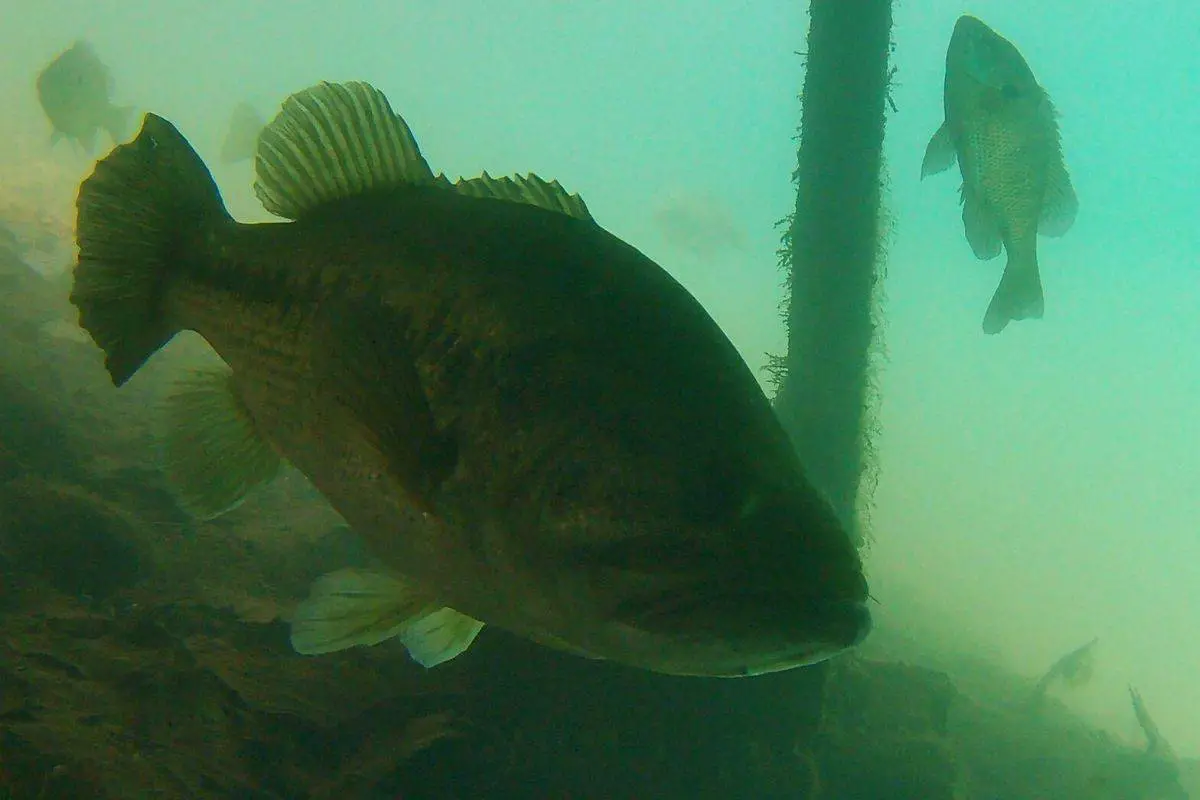There are very few things as frustrating as losing a bass. When a big bass comes off it is even more infuriating.
Here are five common areas that can cause bass to come off your line:
- The drag is set incorrectly
- Using the wrong rod for the technique
- The hookset, line tension, and fighting the fish are done incorrectly
- The line selection is mismatched to the presentation
- The final landing of the bass is mishandled
There isn’t one issue when it comes to losing bass, but understanding each of these factors will help you land more fish. I promise.
Setting Drag Properly to Stop Losing Bass
This part of a reel doesn’t get the attention it deserves. I have learned the hard way over the years why this one feature can ruin or save a day of bass fishing.
Drag Setting Based on Lure and Presentation
First, let’s discuss bass fishing in heavy cover.
When bass anglers use jigs and Texas-rigs to probe the thick and nasty cover bass like to hide in, the drag needs to be cranked tight.
Why?
When we set the hook the fish needs to come directly to the angler as fast as possible. If the bass turns its head it will bury up in the cover and often pull loose. This is the time when we do not want any drag slippage at all.
It is important to note when fishing this type of cover experienced anglers use rods that have lots of backbone and heavy line.
The opposite is true when fishing crankbaits and finesse presentations. Let’s start with crankbaits.
The most notable difference between crankbaits and the above-mentioned presentations is the hooks. Treble hooks tend to “grab” bass as opposed to penetrate like a single hook found on a jig.
This means that it is easy to pull trebles off of the fish.
When using crankbaits, an angler should be able to pull some line by hand off of the reel. This slippage will maintain tension, but allow enough give if the bass runs or dives.
I have had to suffer the consequences of not setting the drag properly for lures with treble hooks more than once.
Saltwater anglers have a specific formula they use to set the drag. Bass anglers do not often do this because we are not pursuing fish as big. Here is the formula they use in case you are interested.
Set the drag at 20%-30% of your line strength. 10 lb test line should have a drag setting of 2-3lbs. Saltwater anglers will use either a spring scale or actual weights to set their reels. Bass anglers will often pull line with their hand to set their drag.
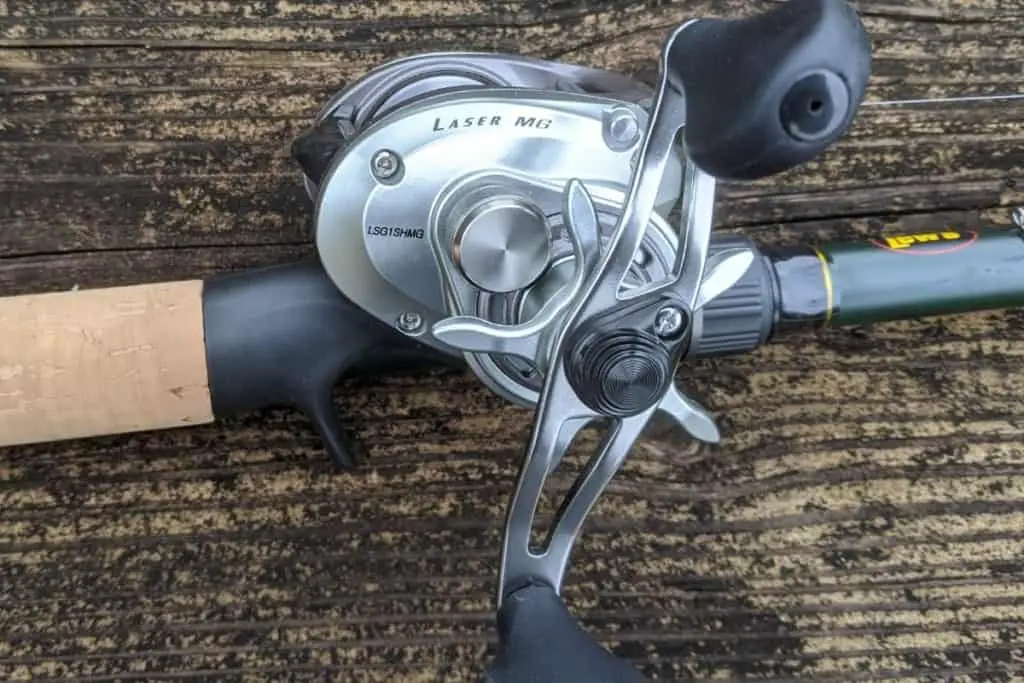
Use the Correct Rod for the Technique to Land More Bass
This may be the most substantial hurdle new bass anglers need to overcome.
A viewer on my YouTube channel said it like this, “For me, my game definitely changed when I realized that you don’t buy a rod/reel setup and put baits on it, you build the rod/reel setup for the bait you’re going to be using.”
Well said.
Fishing rods are like tools a mechanic has in their toolbox. Each one has a specific purpose.
A crankbait rod is going to be horrible at presenting a jig in brush. On the contrary, a heavy power-rated frog rod might be the worst crankbait rod ever. Each rod has its place and applications they have been designed for.
To simplify rod selection I like to think about it like this. For horizontal presentations a rod that has less backbone is good. A quality crankbait rod has good parabolic action to it. In other words, the backbone (power-rating) of the rod does not kick in until farther down the blank. The action (flex in the rod tip) is not as stiff
For vertical presentations in heavier cover, a rod with more backbone is preferred. The energy from our hands needs to be directed to the hook point quickly and efficiently. This will help hook penetration and get the fish coming towards us quicker. Actions for this type of rod are usually extra-fast or fast.
(Here is a more in-depth article on rod selection.)
Fighting a Bass, The Hookset, and Line Tension
This is rarely a problem with smaller bass, but if you get a new personal best to bite then the smallest mistake can mean the fish pulls off and swims away.
The Hookset
Once again, we break down the type of hookset based on the lure being used.
Horizontally presented lures should utilize a side sweep hookset. Lures that are presented more vertical in manner should use a hookset that is also vertical.
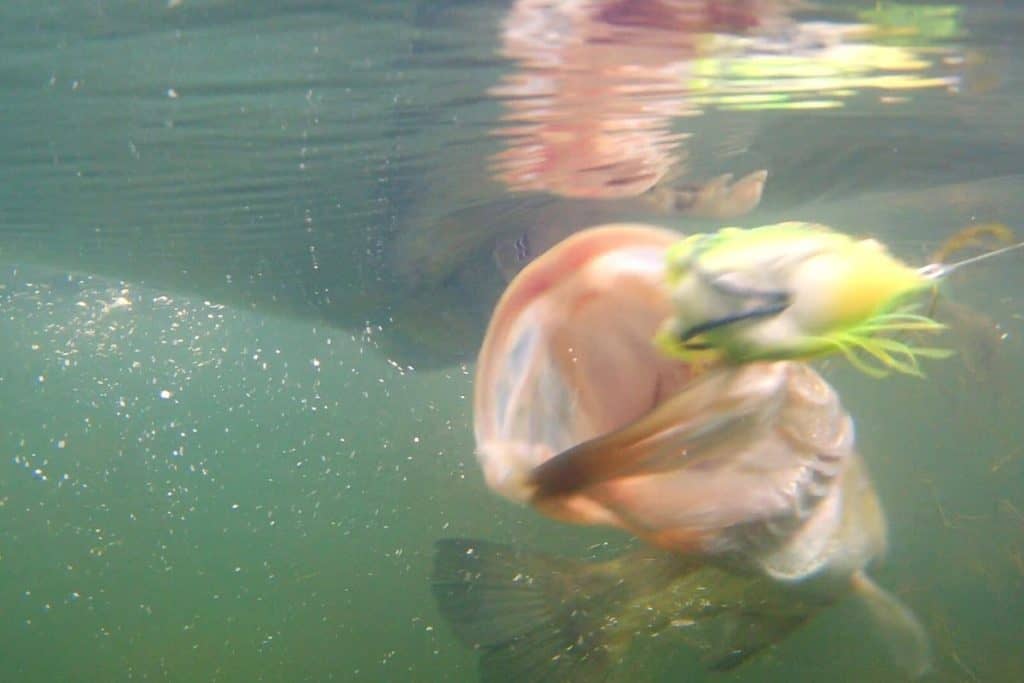
The Fight
Once the bass is hooked, and the drag is set properly for the lure, tension needs to be maintained.
A bass excels at throwing lures when there is slack in the line. This slack is created in a few ways.
First, the bass can swim straight at you. When this happens an angler needs to reel in the slack line as fast as they can.
Second, the bass may launch itself out of the water. While fun to watch, this is almost a guaranteed way to lose a fish. The easiest way to combat this is to thrust the rod tip into the water if you feel the fish coming to the surface. It takes some time to master this technique, but it works well.
Third, slack line can be a problem if an angler inadvertently pumps the rod up-and-down. I most often see this when folks think they need to reset the hook a few times for good measure. When they dip the rod tip and throw slack in the line, the bass come off.
Once the hookset is done, maintain pressure and do not pump the rod.
(Here is an article about when you know it’s time to change lure colors.)
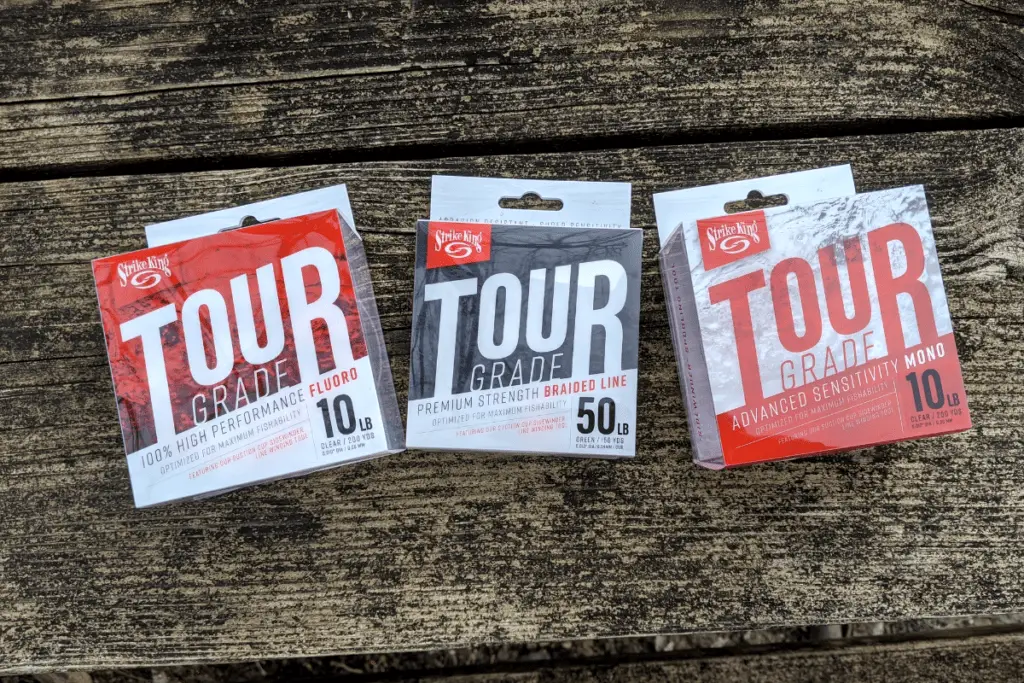
The Importance of Line Selection and Not Losing Bass
This can be a tough decision. Light line will get more bites, yet it is easier to break. Heavy line will be less apt to break, but in the wrong situation, it will deter the fish from biting because it doesn’t look natural.
Finesse presentations and crankbaits pair nicely with lighter line. Even 15 lb fluorocarbon on a crankbait rod is light compared to 65 lb braid used on a frog rod.
When using lighter lines, the rod that pairs with those lures is often not as stiff. For example, a drop shot rod might be rated with a medium-heavy power rating, but it will have a moderately fast action. In other words, there is backbone there, but the tip is softer and doesn’t load up quite as fast. This helps to keep anglers from snapping off the line with too powerful of a hookset.
When fishing thick cover, a heavier line can be used.
The bass are less likely to see it – especially if the water is dirty or has some stain to it. When this is the case, I like to spool up with braid that is at least 50 lb test.
(Here is an article on everything you need to know about braided line.)
Always Check Your Line When Bass Fishing
It is easy to tie on a lure and then fish without ever checking the line.
Bass anglers need to run their fingers down the last several feet of line on a regular basis. The smallest cut or rough spot can create the weak link needed for big bass to bust off.
It takes discipline to stop fishing and retie, but it is necessary.
The best pro anglers in the world retie their lures many, many, times throughout the day. It is also important to check your knot each time you run your fingers down the line.
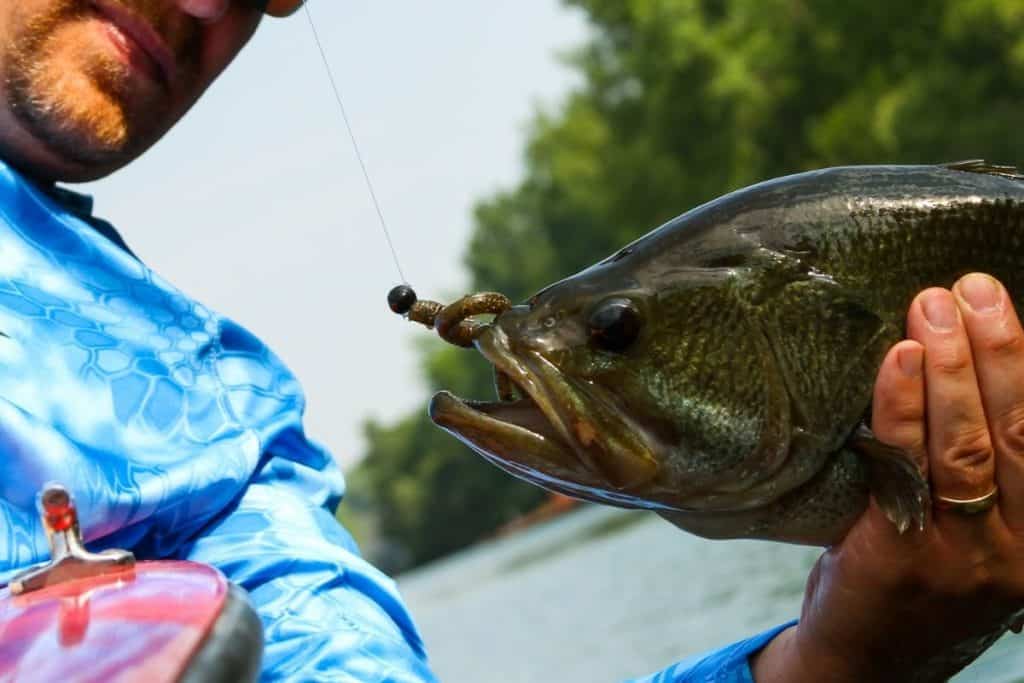
How to Actually Land Bass Either in a Boat or From the Shore
This skill takes practice. Especially when landing a big bass.
When catching smaller fish that are only a couple of pounds, many bass anglers “swing” the fish into the boat or up to them on the shoreline.
Bigger fish require more care.
First, do not attempt to land the bass until it gives up the fight. If you have a smallmouth diving and pulling at the side of the boat, that is not the time to try and get them in hand. Wait until the fish loses some of that fighting spirit.
The next step is to decide if the fish is too big to swing. If you hesitate at all in this decision, then it is best to get your hand in the water to finish the task.
If using a single-point hook, then lipping the fish is a solid option. When the mouth of the bass is full of treble hooks I like to lay down and “scoop” the fish by sliding my hand under them. This is less traumatic for the angler and the bass.
Move With The Fish When Waiting to Land It
You probably have seen footage of bass professionals running all over the boat deck when they have a big fish hooked. They scamper from the front deck to the back and from side-to-side.
They are letting the fish fight it out while maintaining pressure and not horsing it too hard. Forcing a big fish to do what you want is a surefire recipe for disaster.
The more experience you have from years of catching and landing bigger fish will pay off. Soon you will be able to read the mood of the bass and know when it is ready to land.
It is frustrating to lose a bass. Patience and attention to the above-mentioned details will help you be more successful than times when you are not.
Good luck and be sure to encourage someone today. You never know how you may change their life forever.
Isaiah 6:8

